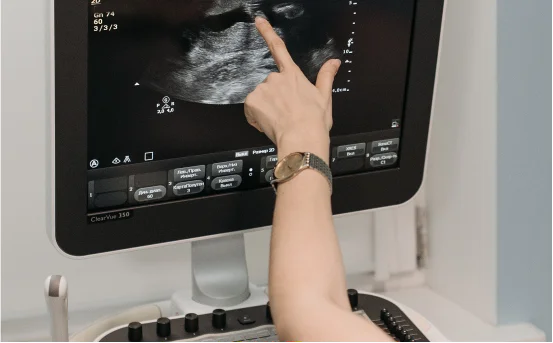Introduction
Cardiac ablation is a specialized medical procedure designed to correct heart rhythm disorders (arrhythmias) by destroying small areas of heart tissue that are responsible for abnormal electrical signals. When medications fail to control symptoms like palpitations, dizziness, or fainting, ablation can offer a long-term solution with improved quality of life. Various types of ablation techniques are used depending on the nature and location of the arrhythmia. Understanding the different types of cardiac ablation surgery can help patients make informed decisions and ease concerns before undergoing treatment.
Types of Cardiac Ablation Surgery
- Radiofrequency Ablation (RFA)
Radiofrequency Ablation is the most commonly used method for treating heart rhythm disorders. In this technique, a thin catheter is guided through blood vessels to the heart, where it delivers radiofrequency energy (similar to microwave heat) to the specific areas causing the arrhythmia. The heat generates tiny scars in the heart tissue, which block the abnormal electrical signals. RFA is highly effective in managing conditions such as atrial fibrillation (AFib), supraventricular tachycardia (SVT), and certain types of ventricular tachycardia (VT). The procedure is minimally invasive, requires only small incisions, and is often done under local anesthesia with sedation, resulting in shorter recovery times. - Cryoablation
Cryoablation works by applying extreme cold to the heart tissue instead of heat. A catheter is inserted into the heart, where it releases freezing temperatures (as low as -80°C) to form controlled areas of scar tissue. This frozen tissue disrupts the abnormal electrical circuits, preventing them from causing arrhythmias. Cryoablation is especially useful in atrial fibrillation, particularly when the abnormal signals originate near delicate structures like the pulmonary veins, where precision is crucial. The cold application causes the tissue to stick to the catheter tip during freezing, offering greater control and stability during ablation compared to RFA in certain areas. - Laser Ablation
Laser ablation uses focused laser energy to burn or vaporize small regions of heart tissue that are responsible for arrhythmic activity. This method allows for extremely precise targeting, making it ideal for situations where conventional heat or cold based ablation methods may be too risky or ineffective. It is less commonly performed because it requires specialized equipment and training, and is often used in cases where other ablation types have failed or are contraindicated. Laser ablation offers high accuracy, but due to its complex nature, it is typically reserved for select arrhythmia cases in specialized cardiac centers. - Microwave Ablation
In microwave ablation, microwave energy is used to create heat and destroy problematic heart tissues. This technique can generate deeper and broader lesions compared to traditional RFA, making it a potential option for certain complex arrhythmias. Microwave ablation is still considered experimental in many cardiac institutions, but it is being explored as a promising alternative for areas where standard catheter ablation may be insufficient. The method is performed similarly to RFA, using a catheter, and is being investigated for its ability to treat larger volumes of tissue quickly and effectively. - Ultrasound Ablation
Ultrasound ablation utilizes high-intensity focused ultrasound (HIFU) waves to thermally ablate the cardiac tissue. Unlike RFA or cryoablation, this method allows energy to be focused through tissues without direct contact, enabling precise destruction of deeper or hard-to-reach areas. HIFU can be especially beneficial in cases where traditional catheter placement is challenging or when non-invasive targeting is preferred. Although this technique is still under research and clinical trials, its non-contact approach offers a safer margin in delicate regions of the heart, and may become a valuable option in the future. - Surgical Maze Procedure (Surgical Ablation)
The Surgical Maze procedure is a more invasive form of ablation performed during open-heart surgery. Instead of using a catheter, the surgeon creates a series of precise incisions or ablations in the upper chambers of the heart, forming a pattern or “maze” of scar tissue. This scar tissue redirects the heart’s electrical signals along a normal path, preventing erratic rhythms. It is most commonly performed in patients undergoing other cardiac surgeries, such as valve repair or coronary bypass, making it a combined treatment strategy. The Maze procedure is highly effective in treating persistent or longstanding atrial fibrillation, especially when catheter ablation has failed or is not suitable.
Conclusion
Cardiac ablation surgery offers a safe and effective solution for many types of heart rhythm disorders. The method chosen whether radiofrequency, cryo, laser, or surgical depends on the type of arrhythmia, the patient’s anatomy, and the severity of symptoms. With advances in technology and imaging, these procedures continue to evolve, offering greater precision, quicker recovery, and long-term control of arrhythmias. Always consult a cardiologist or electrophysiologist to determine the most suitable ablation technique for your condition.






















